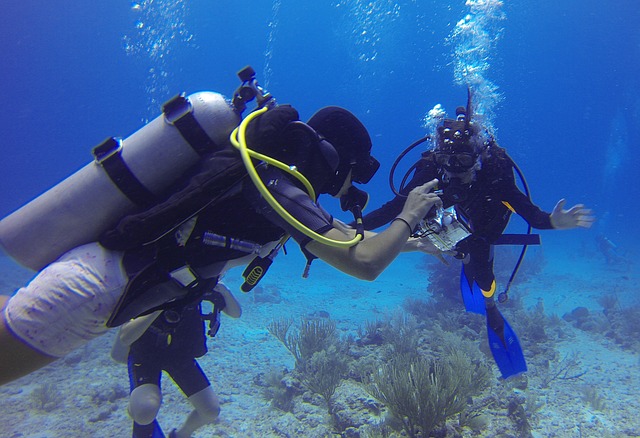Scuba Diving Risks

Are You Prepared?
As wonderful and exciting as diving can be, it doesn’t come without some risks. It is imperative that you are aware of these and know what to do should something occur while you are in the water. The way to minimize the chance of something going wrong is proper training and preparation.
The following article lists some of the risks associated with diving. Although they are daunting if you are just starting out, remember that all of these can be minimized with proper training and preparation.
Please read this excerpt regarding some of the risks you may encounter while diving,
What are the risks?
We have attempted to explain some of the risks below; please do not take this as an all inclusive list. We are not physicians, much less diving-specialist physicians.
Drowning
As far as fatalities, this is actually the highest risk occurrence, although you usually hear more about DCS. Drowning typically occurs because of diver panic or because of a diver becoming unconscious due to other, non-diving related health problems. Diver panic can occur because of an out-of-air situation or other emergency. Proper training and the buddy system can go a long way in preventing diver panic and therefore drowning.
Decompression Sickness
DCS is probably the most commonly talked about diving-related injury. When you breathe compressed air at depth, your body tissues will absorb extra nitrogen. When you resurface, if your tissues have absorbed too much nitrogen, the reduction in pressure can cause that nitrogen to create nitrogen bubbles inside your tissues. This is decompression sickness, or the bends. It causes a lot of pain, and, if untreated, can result in nerve and other tissue damage, and even death.
Arterial Air Embolism
An arterial embolism is a blockage of an artery. This can happen to a diver when bubbles form in an artery on ascent and block the blood-flow. Usually, this is the result of pulmonary barotrauma, or damage to the lungs as a result of differences in the ambient pressure and the pressure in the lungs. For example, if a diver holds his or her breath while ascending, the air inside the lungs will expand and can cause serious or even fatal damage to the lungs.
Nitrogen Narcosis
Nitrogen narcosis is a feeling of drunkenness or giddiness that divers feel at deeper depths, usually around 80-100 feet in saltwater. While not directly damaging, nitrogen narcosis causes temporary reduction in reasoning, decision making, and motor coordination. This can lead to poor decisions by the diver, resulting in DCS or other problems. Nitrogen narcosis is one of the reasons that diving beyond 60 feet requires additional training after your first certification.
Learn diving properly
Scuba diving involves some inherent risks, and because of these risks it requires special training. In fact, ethical dive shops will not sell or rent equipment to someone who does not hold a certification from a recognized agency. When you arrive at a dive operator’s shop to go on a dive, they will require you to show your certification card and, occasionally, a log showing how many dives you have completed.
So, how do you get this certification? Most dive operations also provide instruction, using a curriculum developed by one of the major certification agencies like The Professional Association of Diving Instructors (PADI).
A typical certification course consists of several classroom session in which you learn the basic physics and physiology of diving. You will learn how the changing water pressure as your depth changes affects the air spaces in your body and the air you breath through the regulator. You will also learn how the increased pressure and the breathing of compressed air affects your body. It sounds difficult, but it’s not so bad. You’ll need basic math skills and the ability to read tables.
Learning how to dive in a reputable dive center is essential, so you can become a good and safe divers.










